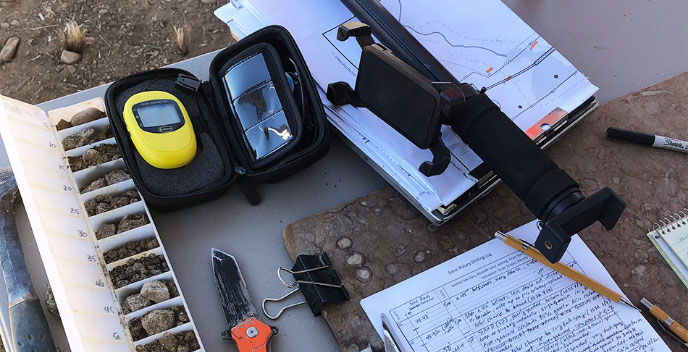Stakeholders need a clear understanding of the potential impacts on the surrounding natural resources, including groundwater and surface water resources before moving forward with a major infrastructure project.
Groundwater modeling provides the necessary data to inform decisions regarding supply and storage, impact assessments, engineering, permitting, and groundwater stability.
When an energy company proposed a large-scale renewable energy storage project in the Southwest, they needed a detailed analysis of potential impacts to nearby river flow, residential wells, and groundwater supplies.
The proposed energy storage facility consisted of upper and lower closed-looped reservoirs connected by an underground powerhouse and three transmission interconnections. Water would be pumped from the lower reservoir to an upper reservoir during periods of abundant renewable energy or low electrical demand to store it as potential energy. The facility could then return the stored energy to the grid when needed by allowing water to flow by gravity from the upper reservoir through a generation turbine to the lower reservoir. This process would make renewable energy available that would have otherwise gone to waste.
Hargis was retained to conduct an assessment of groundwater and surface water supplies in the region and to develop a predictive groundwater flow model. A U.S. Geological Survey (USGS) regional groundwater flow model was used as the starting point. The model was updated, reconfigured, and recalibrated using the latest geologic, hydrologic, and meteorological data available for the region, with a focus on analyzing the effects of groundwater pumping on groundwater levels and the base flow of a nearby river. The model was used to evaluate the effects of future groundwater pumping, including various alternative scenarios involving retirement of irrigated lands for mitigation of possible impacts to the river.

Preliminary results of the assessment convincingly demonstrated through high-quality data and staff expertise that project impacts to local groundwater and surface water supplies would be minimal. Impact mitigation measures proposed by the client were projected to result in an improvement in water supply conditions, resulting in project support from most local residents and smaller stakeholder groups.
There have been many long-standing water-rights disputes between several of the major stakeholders in the area. Because resolution of these water-rights issues was anticipated to be a lengthy process, the project was suspended by the client prior to completion.
KEY ACCOMPLISHMENTS
• Conducted assessment of groundwater and surface water supplies
• Developed predictive groundwater flow model
• Evaluated potential effects of future groundwater pumping and mitigation strategies

